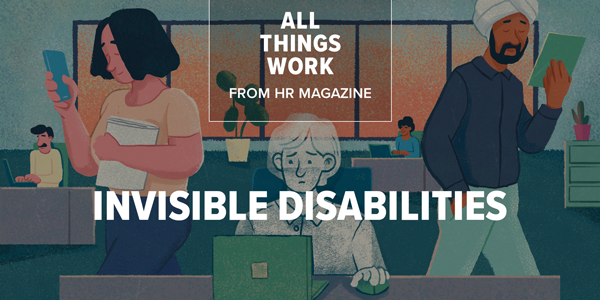Approximately 33 million adults in the U.S. live with an invisible, or nonapparent, disability. These disabilities often don't manifest themselves in ways that are immediately evident to others. Some examples include autism, diabetes, traumatic brain injury, chronic pain, mental health conditions and Crohn's disease.
Employees with nonapparent disabilities have historically faced discrimination in the workplace due to others perceiving them as lazy, weak, antisocial or incompetent. Recent SHRM research reveals that 47 percent of employees with invisible disabilities have not disclosed their conditions to their employers.
There's good reason. People who have revealed their condition are two to three times more likely than their co-workers and supervisors to report experiencing incivility in the workplace, such as rudeness, disrespect or insensitive behavior.
To prevent this from happening, workplace experts recommend that company leaders and managers start by asking their affected employees, "How can I help?" Doing so can launch a collaborative process to determine how to accommodate these employees so they feel safe in their workplace and perform at their best.

.jpg)

.png)


Comments
Post a Comment